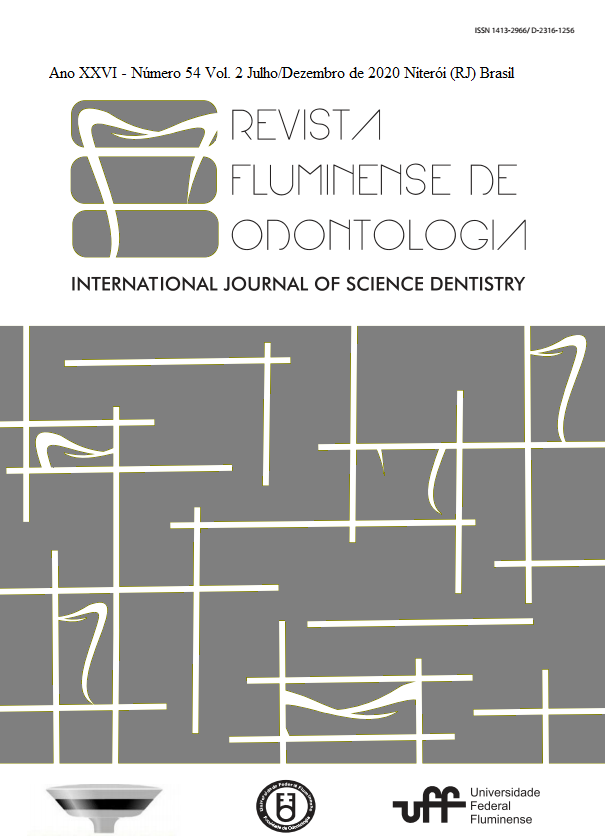PLASMA RICO EM FIBRINA (PRF) COMO OPÇÃO DE RECOBRIMENTO APÓS ROTAÇÃO DE RETALHO PALATINO PARA TRATAMENTO DE FÍSTULA BUCOSSINUSAL
DOI:
https://doi.org/10.22409/ijosd.v0i54.40996Resumo
Resumo
O desenvolvimento de uma fístula bucossinusal, a partir de uma comunicação gerada entre a cavidade oral e o seio maxilar, pode ser favorecido por um não fechamento espontâneo ou por uma sinusite maxilar crônica já instalada. O tratamento da fístula bucossinusal depende de fatores que podem beneficiar ou dificultar o prognóstico dos casos, como a localização, causa e o tamanho do defeito gerado. Diferentes técnicas são descritas na literatura para o tratamento destes defeitos orosinusais, como retalhos locais deslizantes ou rotacionados, enxertos autógenos ou o uso da bola de gordura bucal. O objetivo do presente trabalho é apresentar o caso clínico de uma fístula bucossinusal pós exodontia há aproximadamente 05 anos, não corrigida imediatamente, tratada através de retalho mucoso palatino rotacionado. Como coadjuvante para a cicatrização da área doadora foi utilizado membrana de fibrina rica em plaquetas. A técnica do retalho palatino mostrou-se uma opção favorável para o fechamento da fístula bucossinusal e o uso dos fatores de crescimento permitiu vascularização adequada na área doadora e no retalho rotacionado, o que favoreceu a hemostasia vascular e estimulou a recuperação dos tecidos moles adjacentes.
Palavras-chave: Seio maxilar, fístula bucoantral, cirurgia bucal, fibrina rica em plaquetas.
Abstract
The development of a bucosinusal fistula from a communication generated between the oral and maxillary cavity may be favored by a spontaneous unblocked or an existing chronic maxillary sinusitis. The treatment of bucosinusal fistula depends on factors that may benefit or hinder the prognosis of cases, such as location, cause and size of the defect used. Different techniques are described in the literature for the treatment of these oral defects, such as sliding or rotating local flaps, autogenous grafts or the use of the buccal fat ball. The aim of the present study is to present the clinical case of a post-extraction bucosinusal fistula approximately 05 years ago, not immediately corrected, treated through a rotated palatal mucosal flap. As an adjunct to the healing of the donor area, a platelet-rich fibrin membrane was used. The palatal flap technique proved to be a favorable option for the closure of the bucosinusal fistula and the use of growth factors allowed adequate vascularization in the donor area and in the rotated flap, which favored vascular hemostasis and stimulated the recovery of adjacent soft tissues.
Key-words: Maxillary sinus, oroantral fistula, oral surgery, platelet-rich fibrin





